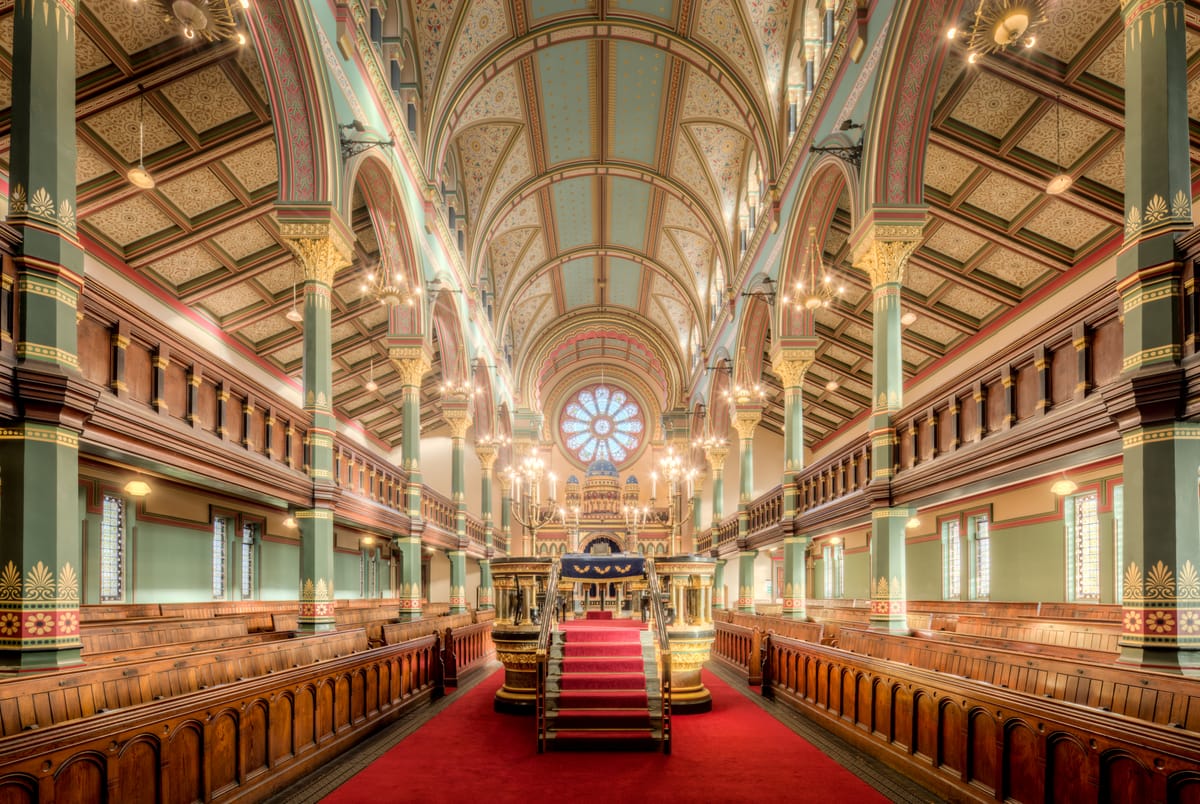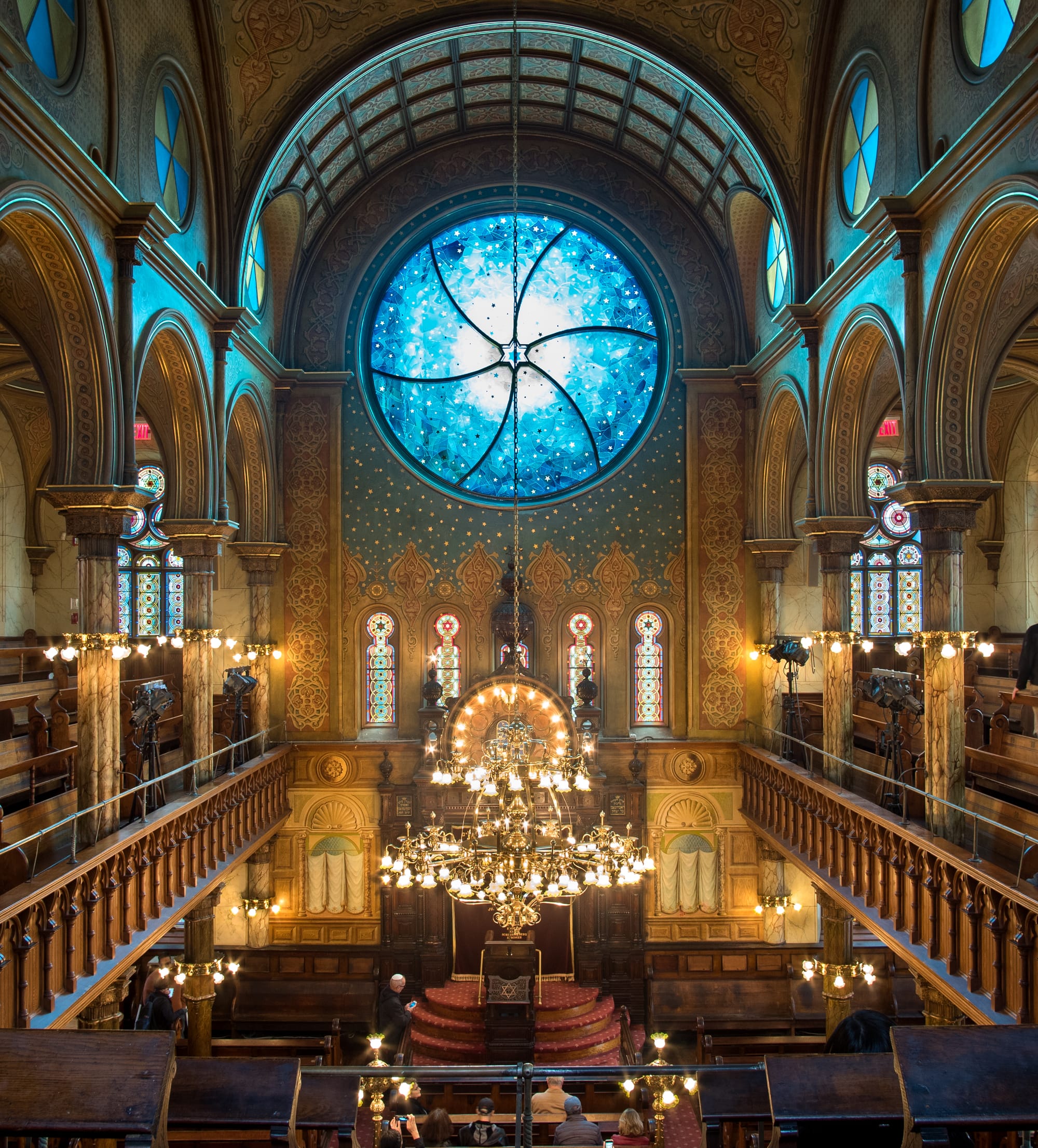Zoom as a synagogue

How converting to Judaism changed my relationship with Zoom and why online worship is so Jewish
By mid-2021, I was over Zoom. I had spent the past year-plus participating in Zoom birthday parties, baby showers, and holiday parties. I had met friends for Zoom coffee dates. I had attended a Zoom campaign fundraiser, Unitarian Universalist Christmas service, and magic show. As the COVID vaccine rolled out and in-person events returned, I was ready to log off Zoom for any and all non-work purposes.
But when I started exploring Judaism, Zoom crept back into my personal life. I attended an Introduction to Humanistic Judaism class via Zoom, and then a Zoom Passover Seder. I started attending weekly Mi Sheberach prayers via Zoom, and took a couple of Zoom courses from the UnYeshiva.
Not everything I do Jewishly revolves around Zoom. I'm a member of a Humanistic Jewish congregation and I attend most holiday services in-person, as well as occasional Shabbat services and social events. I have offline Shabbat rituals and holiday practices. But my engagement with Judaism is primarily online, a marked contrast to how I worshiped as a Catholic for the first twenty-odd years of my life and as a Unitarian Universalist for several years after that.
Partly, that's a sign of the times—thanks to the explosion of Zoom during the COVID pandemic, many religions have expanded their online offerings. For example, the Unitarian Universalist fellowship that I previously attended now broadcasts their Sunday services via YouTube and Zoom. However, I do think there are some aspects about Judaism that makes it uniquely suited to Zoom and other forms of online engagement.
Accessibility
Across much of the United States, Jews are a tiny minority—I live in Minnesota, which is home to approximately 65,900 Jewish people, or just over one percent of the state's total population. Most of us are concentrated in the Twin Cities metro, and luckily the Jewish community center where my congregation holds many of our services is a 30-minute drive from my home. However, many Jewish people aren't as fortunate—they live in places where they would have to drive hours to the nearest synagogue, which may not even be affiliated with their particular denomination or align with their beliefs. (In the U.S., there are five Jewish denominations—Orthodox, Conservative, Reform, Reconstructionist, and Humanistic—plus many Jews and synagogues that identify as non-denominational, post-denominational, or trans-denominational.) Zoom services are great for geographically isolated Jews who may not be able to access an in-person community that meets their spiritual needs.
There are also the social and cultural aspect of Jewish life. In places like New York City, which is home to nearly one million Jews, there are Jewish theater and dance performances, lectures, museum exhibits, family activities, cooking classes, and more. I get to experiences some of those things in the Twin Cities, but on a much more limited basis. Similar to religious services, when culturally Jewish events are broadcast online, they're accessible to people who can't attend in-person due to distance. One of the most fascinating Jewish events I've attended was the exhibition opening of Runaway Husbands, Desperate Families: The Story of the National Desertion Bureau. The in-person event was held at the YIVO Institute for Jewish Research in New York City, but I was able to follow along at home and and learn all about the National Desertion Bureau, which was founded in 1911 to track down wayward Jewish husbands and pressure them into support their families. The Bureau was remarkably successful at finding people—one oft-utilized tactic was to run mug shot-style ads in Yiddish newspapers. Thanks to Zoom, I had the opportunity to discover this offbeat niche of Jewish-American history.
Time limitations are another part of accessibility—Americans typically don't get Jewish holidays as paid days off from work, so attending holiday services can be challenging. I'm fortunate to work from home, so I can usually hop onto a Zoom service for an hour during my work day. It would be more difficult to take off the few hours required to drive to a synagogue, attend the service, and then drive home.
Obviously, there are accessibility issues beyond geography and time that aren't specific to the Jewish community, including people who have disabilities that make it difficult to leave their homes and people who are immunocompromised and can't risk in-person attendance. It's heartening to see that Zoom has become ingrained into many Jewish communities and organizations, making Judaism more accessible for everyone.

Convert-friendly spaces
There are plenty of converts to Judaism, but we're a minority (about 17 percent of the U.S. Jewish population), and it can be incredibly intimidating to attend an in-person service when you might be the only convert in the room. Unlike Christianity and Islam, proselytization is not an aspect of Judaism, so many Jewish spaces don't have a framework or support system for welcoming newcomers to the religion.
Humanistic Judaism is explicitly welcoming to Jews-by-choice, and overall I have had good experiences. However, I'm one of the few Jews-by-choice in my congregation, and people tend to make a lot of assumptions about my upbringing and background unless I explicitly tell them otherwise. Once, just before a Shabbat service started, a fellow member found out that I was a former Catholic and asked, "What are you doing here? If you didn't like the Catholic church you could have just become a Lutheran." It was disheartening to say the least.
The online Jewish spaces I've participated in feel more welcoming to converts. There is some self-selection in this—the Zoom services I seek out have a progressive, non-denominational, and/or Humanistic slant—and my Jewish imposter syndrome also plays a role (it's harder to feel like an imposter if you can turn off your video camera and literally disappear). However, there are some unique features to participating in Jewish worship via Zoom that make it especially welcoming to converts. For example, you can ask questions in the chat if you don't recognize a word, or do a quick Google search to research an unfamiliar concept. You can turn off your microphone so that no one hears your mispronounced Hebrew, and it's easier to set boundaries around your interactions with other attendees.
There are also online services and events specifically geared to converts and people who are new to practicing Judaism, like the Shavuot learner's service hosted by My Jewish Learning. Throughout the service, the rabbi explained each element of the Shavuot holiday service and how it differed from a typical daily service, as well as discussing the significance of different prayers and practices. It was incredibly educational, and it was gratifying to be among other people new to Judaism in a space that was designed to meet our needs.

Two Jews, three opinions
There is an oft-cited joke that if you get two Jewish people together, they will have three different opinions—dissension and debate are central to the Jewish tradition, as is grappling with difficult ideas and not necessarily landing on a definitive answer. There is a lot of ambiguity in Judaism, perhaps most famously about the afterlife, and there are innumerable theories about the nature of God. Jews are encouraged to ask questions and figure things out for ourselves, and online spaces like Zoom can be more participatory, egalitarian spaces to do that than an in-person gathering.
One of the most unique community experiences that I have ever been a part of—online or offline—was Judaism Unbound's ShavuotLIVE 2024. For 24 straight hours on Zoom, different speakers presented on topics as wide-ranging as Jewish witches to the Torah of ceasefire and liberation to pro wrestling as a spiritual practice. Attendees used the chat function to add context, veer off in different directions, debate, explore, and provide resources. One hour was reserved for anyone who wanted to chime in to bring their own Torah (or teachings) to the gathering. It was creative, vibrant, beautiful, and very, very Jewish, and it wouldn't have been possible without Zoom.

I love #synagoguesunday on My Jewish Learning's Instagram account—each week they feature a noteworthy historic synagogue, from places including Berlin, Jamaica, Istanbul, and Tunisia. The diverse architecture and art are awe-inspiring, and it would be wonderful to visit and worship in those synagogues in-person.
But technically, the definition of a synagogue is "a place of worship and study for the Jewish community." The people and what they do there are what make a synagogue, rather than the specific setting. A synagogue can be a dedicated building or it can be a Jewish community center. It may exist for a few hours each Shabbat in a rented space.
And it might be on Zoom.